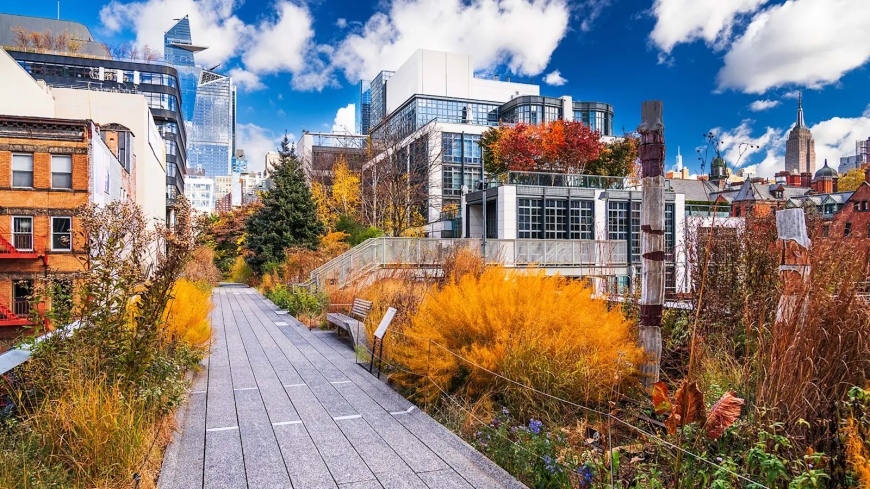Adaptive Reuse & Circular Design: When Old Buildings Get a Second Life
Adaptive reuse and circular design are redefining architecture. By working with what’s already built, cities cut carbon, save costs, and create places that feel real. It’s not nostalgia. It’s the future — built from the past.

Old Bones, New Energy
Walk through any city and you’ll see it — old factories now buzzing with cafés, worn facades wrapped in new glass, warehouses that hum with life again. Architects call it adaptive reuse. It’s not just about saving a building. It’s about giving it another chapter.
Circular design runs alongside it — the idea that materials shouldn’t die with one project. Steel, wood, glass — they go again. Nothing wasted, everything reused.
It sounds idealistic. It isn’t. It’s practical, urgent, and honestly, kind of cool.
Why It’s Taking Off Now
Construction eats resources like few other industries. You build new, you burn carbon. Cities everywhere have reached that uncomfortable truth. So, instead of starting fresh, people are asking: what if we just fix what we already have?
And surprise — it works. Developers save time and money. Architects get creative constraints. Residents get spaces that actually feel alive, not just polished and cold.
The Charm of Imperfection
A brick wall with cracks. Rusted beams. Floorboards that creak a little. Ten years ago, those were problems. Now they’re the vibe.
Designers call it “honest texture.” You see the history instead of hiding it under drywall. The roughness becomes beauty.
There’s emotion in these places. You can tell people worked there once, lived there, argued, dreamed. That energy doesn’t leave. You just build around it.
Circular Design: The Loop Mindset
Here’s the bigger idea. Circular design says every building material has more than one life. Instead of tearing things down and tossing them out, you plan from the start for what happens later.
So windows can be reused. Floors can be unbolted and moved. Even wiring gets a second act somewhere else. Some architects are tracking this with “material passports” — like digital IDs for bricks and beams.
It’s design that thinks in loops, not lines.
Examples Everywhere
Europe’s been at it for years — old power stations turned into museums, breweries into apartments. Berlin, Amsterdam, Copenhagen, all doing it.
Asia’s catching up fast. Mumbai’s old mills are now art galleries and cafés. In Singapore, car parks are becoming gardens. In Shanghai, banks from the 1920s now host hotels and design studios.
Every project tells the same story: use what’s already standing.
The Numbers Add Up
There’s also the carbon math. When you reuse a building, you skip the emissions baked into making concrete and steel. That “embodied carbon” is massive — almost half a building’s footprint. Keeping those materials in place is like saving a forest, quietly.
That’s why adaptive reuse isn’t a trend — it’s a strategy.
It’s Not Always Easy
Of course, the reality’s messy. Old buildings hide surprises. Weak foundations, dodgy wiring, heritage rules that contradict safety codes. Sometimes you spend more fixing than building new.
But when it works, it pays back tenfold. The story, the character, the reduced footprint — that’s brand value, cultural value, climate value rolled together.
Why People Love These Spaces
Maybe it’s nostalgia. Or maybe it’s fatigue from sterile glass boxes. Whatever it is, people prefer places with memory. The light hits differently in a space that’s lived before. You can feel it.
Restaurants keep the old tiles. Start-ups rent lofts in ex-factories. Even luxury hotels are chasing that “raw but refined” mood. Authenticity sells better than perfection.
The Bigger Shift
All this points to a quiet but deep mindset change. Buildings aren’t disposable anymore. They’re shared objects, passed down, reinterpreted.
Circular design extends that thinking — from individual buildings to whole cities. One project’s leftovers become another’s foundation. Waste becomes resource.
That’s not just design. That’s philosophy.
The Future Looks Familiar
Tomorrow’s landmarks won’t be new towers. They’ll be the old shells we’ve learned to love again. Adaptive reuse is teaching cities to evolve instead of erase. Circular design keeps the cycle going.
The result? Spaces that feel grounded, layered, human. Architecture that remembers — and still moves forward.
What's Your Reaction?
 Like
0
Like
0
 Dislike
0
Dislike
0
 Love
0
Love
0
 Funny
0
Funny
0
 Angry
0
Angry
0
 Sad
0
Sad
0
 Wow
0
Wow
0























































































































































































